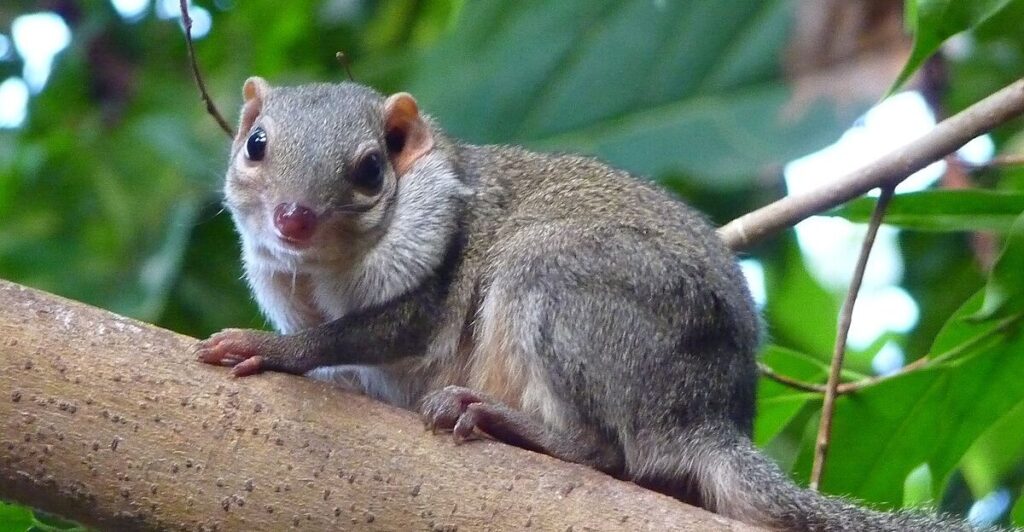
Ferrets are known for their playful antics and insatiable curiosity, but they aren’t the only animals with captivating traits. With fascinating behaviors and unique adaptations, these creatures mirror the charm of ferrets in surprising ways. Get ready to meet 12 animals that are just as intriguing and delightful!
1. European Polecat: A Wild Hunter in the Woods

A true woodland dweller, the European polecat is a nocturnal predator with sharp hunting instincts. Roaming Europe’s forests and grasslands, this agile creature hunts small mammals and birds. The dark, sleek coats and stealthy movements make them effective hunters and also help them blend seamlessly into their environment while living a solitary lifestyle.
2. Asian Small-Clawed Otter: An Aquatic Acrobat

These otters are native to Southeast Asia and thrive in both fresh and brackish waters. Known for small claws, they use them to expertly hunt small fish, crabs, and mollusks. Asian small-clawed otters are often seen frolicking together as they enjoy their aquatic homes with acrobatic displays of fun.
3. Coati: A Mischievous Tree-Dweller

With their long, pointed noses and ringed tails, coatis are fascinating creatures found in Central and South America. These raccoon relatives are social and incredibly curious, often seen rummaging through trees and on the ground. Their mischievous nature makes them delightful to observe as they forage for food in diverse habitats.
4. Spotted Genet: A Stealthy Nocturnal Carnivore

Genets are slender creatures native to Africa, known for spotted fur and cat-like faces. These nocturnal animals are skilled climbers, spending much of their time high in the trees. Moreover, their diet includes small mammals, birds, and fruits, and they’re known for their elusive nature, preferring the shadows of the night.
5. Jerboa: A Leaping Desert Dweller

This one on the list is a nocturnal rodent that is a master of jumping and able to travel vast distances with powerful leaps. Found hopping through the deserts of North Africa and Asia, its powerful hind legs propel it forward, while its tail keeps it balanced mid-air. Talk about a natural acrobat!
6. Kinkajou: A Honey-Loving Tree-Hopper

Kinkajous, or “honey bears,” are the wild acrobats of Central and South America. They are equipped with prehensile tails and agile limbs, which help them leap from branch to branch, hunting for fruits, nectar, and honey. With their playful energy and a knack for swinging like pros, Kinkajou brings a whole new meaning to jungle gymnastics.
7. Springhare: A High-Flying Rodent

Another rodent on the list, this one is prominent for its impressive jumping abilities. It has long, powerful hind legs that can leap several feet in a single bound, escaping predators in an instant. These creatures are also skilled diggers, creating burrows to stay safe from the harsh desert environment.
8. Colombian Weasel: The Skilled Swimmer

Colombian weasels, native to the Andean region, are small, reclusive animals found along high-altitude streams. Their golden-brown coats and long tails give them a ferret-like appearance. However, they are skilled swimmers, often catching fish and amphibians. The Colombian weasel is among the rarest mammals in South America.
9. Sandfish Skink: A Desert Acrobat

Found in the deserts of North Africa, the sandfish skink has a unique ability to “swim” through sand. Its smooth, slender body allows it to glide beneath the surface, avoiding predators and staying cool in the extreme desert heat. These reptiles use specialized limbs for digging and burrowing.
10. Black-Footed Cat: A Small, Lethal Hunter

The black-footed cat is one of Africa’s smallest and most lethal predators. It is a hunter known for its deadly precision and remarkable speed. Roaming the savannas and grasslands, black-footed cats can hunt various prey, from rodents to birds, using stealth and speed to outmaneuver their targets.
11. Tree Shrew: A Tiny Acrobat

Despite the name, the tree shrew is not a true shrew but a small mammal closely related to primates. Found in Southeast Asia, these agile creatures spend much of their time in trees, foraging for insects, fruits, and small animals. Furthermore, long tails and quick reflexes aid navigation through forested habitats with ease.
12. Pine Marten: A Forest Acrobat

Despite its misleading name, the tree shrew isn’t a shrew at all—it’s actually a small mammal that shares a closer connection to primates. Found across Southeast Asia, tree shrews are expert climbers, spending most of their time in the treetops, hunting for insects, fruits, and even small animals.
Stay connected with us for more stories like this! Follow us to get the latest updates or hit the Follow button at the top of this article, and let us know what you think by leaving your feedback below. We’d love to hear from you!







